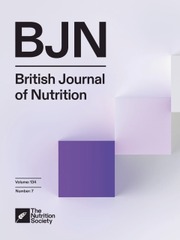No CrossRef data available.
Article contents
The development and evaluation of multiple regression equations based on four common nutritional analysis packages to predict the metabolisable energy density of diets fed to grower/finisher and adult pigs and their use for rat and mouse diets
Published online by Cambridge University Press: 17 January 2025
Abstract
We have used multiple regression analyses to develop a series of metabolisable energy prediction equations from chemical analyses of pig diets that can be extended to murine diets. We compiled four datasets from an extensive range of published metabolism studies with grower/finisher and adult pigs. The analytes in the datasets were increasingly complex, comprising (1) the proximate or Weende analysis, (2) the previous analysis but with neutral detergent fibre replacing crude fibre, (3) the neutral detergent fibre package plus starch and (4) the neutral detergent fibre package plus starch and sugars. Diet manufacturers routinely provide most of the analytes for batches of murine diet, or they are easily obtainable. The study uniquely compares the four analytical packages side by side. The number of records in the datasets varies from 367 to 827. With increasing analytical complexity, adjusted R2 values for metabolisable energy prediction improved from 0·751 to 0·869 and the mean absolute error from 0·422 to 0·289 kJ/g. Overall, the models’ prediction interval improved from 1 to 0·7 kJ/g, which is ± 7 to 5 % for a typical dietary metabolisable energy density of 14·8 kJ/g. Although prediction accuracy increases as one extends the range and complexity of the analytes measured, the improvement is slight and may not justify the substantial increase in analytical cost. The equations were validated for use on future datasets by k-fold analysis. Although the equations are developed from pig data, they are suitable for rat and mouse diets, based on comparable digestibility measurements, and substantially improve existing methods.
Keywords
Information
- Type
- Research Article
- Information
- Copyright
- © The Author(s), 2025. Published by Cambridge University Press on behalf of The Nutrition Society


